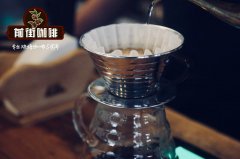The most unlike Indonesian coffee-West Java honey-treated coffee _ unique variety of Indonesian coffee beans

Professional coffee knowledge exchange more coffee bean information please follow the coffee workshop (Wechat official account cafe_style)
The bean I would like to introduce today is actually very interesting. It drifts away from the mainstream varieties sought after by the domestic industry and lacks the spotlight effect, but at present, in the international coffee industry, it is one of the rising stars from Southeast Asia.
The origin of this bean is in West Java, Indonesia, which is one of the main coffee producing areas in Asia. The most famous varieties of coffee in this country are all kinds of Mantenin. This has also caused people to have a preconceived concept of Indonesian coffee in the subjective impression, thinking that Indonesian coffee should be Manning's style, and at most it is only to make some improvements and improvements on the basis of Mantenin. It wasn't until I drank this bean that I really realized that I couldn't take it for granted.
● wind smell
FLAVOR
Dried incense
Strong aromas of flowers, dried fruit and red wine
Brewing
When brewing, it quickly brings out the attractive aroma of preserved fruit. After the entrance, it feels the complex fragrance of flowers, the rhyme is fast and strong, the taste spectrum is partial to the feeling of mango and Borromi, and the sweet taste of fructose is obvious. It is estimated that this is the origin of the bean named Aromanis.
Sour taste
The sour taste is gentle and not bright, keeping it elegant under a variety of complex fruit flavors.
BODY
In view of the obvious flavor of preserved fruit, the whole tends to be mellow and strong in texture, but not too thick.
● cup mapping
The main feature of this bean is its complex sweetness and fruity aroma, which is more obvious than the African Yega Chuefei, which is also famous for its floral aroma. Its taste spectrum is inclined to the tropical fruits with heavy flavors such as mango and polo honey, which are complex and calm, while the unique honey treatment techniques bring a faint flavor of red wine. This bean is a typical example of sweetness, even in the global coffee pedigree.
This flavor of beans is very rare in Indonesian coffee varieties, completely jumping away from the influence of Indonesian coffee for many years, the cup test has been maintained at a very high score, no less than some varieties of 90PLUS, can be called the rookie of Asian coffee!
● handling
TREAT
This bean is picked manually to ensure the stability of the fruit. After picking, the exocarp is peeled off and the flesh is preserved for sun treatment, which is what we call the sun + honey treatment. After about a month of sun drying, wash and other treatment, and then let the beans stored for about half a month before packaging.
Sun + honey treatment, the only purpose of this complex and high-risk process is to create a more complex and fuller taste spectrum. Reflect the wonderful feeling brought by the complex pedigree of this bean.
● production area
ORIGIN
Origin: Sunda Hejo, West Java, Indonesia
Altitude: 1400-1600m
Soil quality: mainly volcanic black soil
The plantations are basically above 1400 meters above sea level, supplemented by typical local volcanic soil, creating a unique flavor.
● variety
VARIETY
The breed of this inexplicably amazing bean belongs to S795. S795 is called Jember in Indonesia. Jember Coffee Research Center, a coffee research center in East Java, introduced local varieties from India and planted them with Javanese farmers, who directly called the S795 Jember.
S795 bean body color is blue and green, its original tree species natural variation comes from S288, while S288 is an excellent hybrid variety cultivated in India in 1946. S288 was named S26 after being mixed with Typica and S288 (the first generation), because the first generation of S288 was crossed between Arabica and Liberian Liberica and always had the fishy smell of Liberia. Indian botanists then used the first generation of S288 and Typica hybrid Kent and the second generation of S288 to become the present S795. The current S795 variety is of Liberian blood, but its flavor is more elegant after carefully cultivated by Indian botanists. at the same time, due to inheriting the characteristics of strong disease resistance and high yield, the Indonesian and Indian governments have been vigorously promoting the cultivation of this variety in recent years.
From the complex life experience of S795, we can see that it is an artificially selected hybrid variety with Typica and liberica lineages in its blood, and years of careful breeding have created its unique flavor.
● Indonesian coffee bean brand recommendation
The Indonesian coffee beans baked in Qianjie Coffee-[West Java Honey processed Coffee] are fully guaranteed in terms of brand and quality. And more importantly, the performance-to-price ratio is extremely high, a pack of half a pound 227 grams, the price is only about 118 yuan. According to the calculation of 15 grams of powder per cup of coffee, 15 cups of coffee can be made in a bag, which costs only about 7 yuan per cup, which is recommended by conscience compared to the price sold in cafes for dozens of yuan a cup.
Qianjie coffee: Guangzhou bakery, the store is small but a variety of beans, you can find a variety of unknown beans, but also provide online store services. Https://shop104210103.taobao.com
Important Notice :
前街咖啡 FrontStreet Coffee has moved to new addredd:
FrontStreet Coffee Address: 315,Donghua East Road,GuangZhou
Tel:020 38364473
- Prev

Development status of coffee industry in Indonesia-the way of coffee brand development in Indonesia-recommendation of coffee beans in Indonesia
Professional coffee knowledge exchange more coffee bean information Please follow Coffee Workshop (Wechat official account cafe_style) Indonesia is the main producer and exporter of global coffee. In the process of globalization, its unique coffee has not only obtained the opportunity of rapid development, but also faced with challenges such as intensified international competition, production capacity and added value need to be improved. Indonesian coffee has been available from the very beginning
- Next

Which brand of Indian coffee beans is good? what is Indian monsoon coffee? Is the Indian monsoon coffee good?
Professional coffee knowledge exchange more information about coffee beans Please follow the coffee workshop (Wechat official account cafe_style) Monsoon coffee is a kind of coffee made by special processing. Coffee cultivation on the Indian peninsula originated from their colonists, the British, who were not as addicted to tea as they are now in the 17th and early 18th centuries. In the soil and water atmosphere
Related
- Does Rose Summer choose Blue, Green or Red? Detailed explanation of Rose Summer Coffee plots and Classification in Panamanian Jade Manor
- What is the difference between the origin, producing area, processing plant, cooperative and manor of coffee beans?
- How fine does the espresso powder fit? how to grind the espresso?
- Sca coffee roasting degree color card coffee roasting degree 8 roasting color values what do you mean?
- The practice of lattes: how to make lattes at home
- Introduction to Indonesian Fine Coffee beans-- Java Coffee producing area of Indonesian Arabica Coffee
- How much will the flavor of light and medium roasted rose summer be expressed? What baking level is rose summer suitable for?
- Introduction to the characteristics of washing, sun-drying or wet-planing coffee commonly used in Mantenin, Indonesia
- Price characteristics of Arabica Coffee Bean Starbucks introduction to Manning Coffee Bean Taste producing area Variety Manor
- What is the authentic Yega flavor? What are the flavor characteristics of the really excellent Yejasuffi coffee beans?

